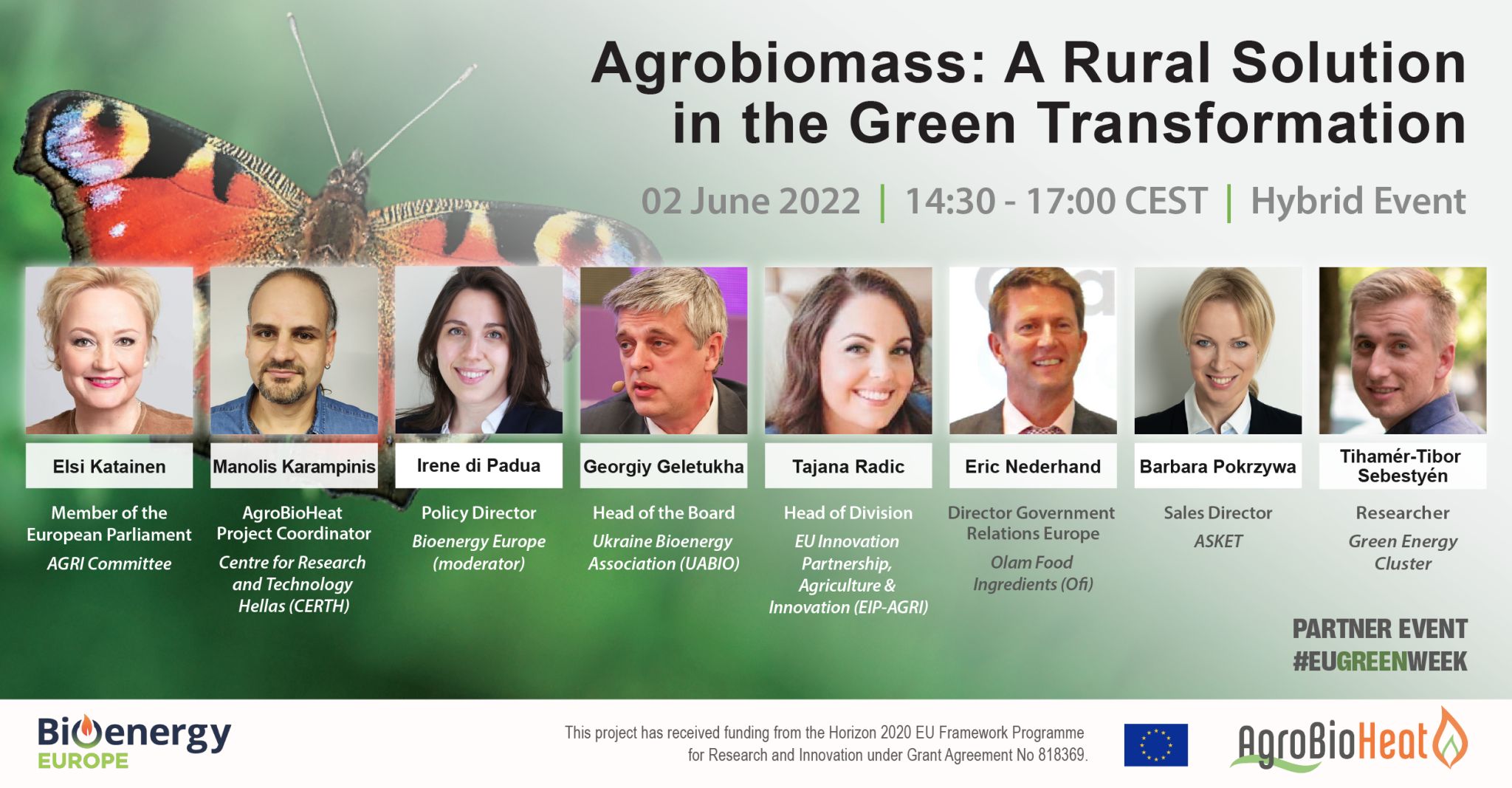Final AgroBioHeat event during the EU Green Week “Agrobiomass: A Rural Solution in the Green Transformation”
On 2 June, Bioenergy Europe organized the final event of the Horizon2020 project AgroBioHeat, presenting the achieved result as well as discussing the state of play and outlook for the agrobiomass sector.
The final event of the AgroBioHeat EU-funded project took place last Thursday, both at the Scotland House (Brussels) and online. The hybrid event was a great success, with more than 70 participants joining the debate and discussing challenges and opportunities for agrobiomass applications.
The session was opened by Elsi Katainen, Member of the European Parliament and Vice-chair of the Agriculture and Rural Development (AGRI) committee. She touched upon the different aspects of the agricultural sector and stressed how we will need renewable solutions like biomass from the agricultural sector to be part of the EU future energy mix.
Given that AgroBioHeat is coming to an end, it was timely to look more specifically at the achievements of the project. Manolis Karampinis, the project coordinator from CERTH – Centre for Research and Technology Hellas – explained the overall approach and activities. He went into detail on several emerging agrobiomass initiatives that were supported by the project in Croatia, France, Greece, Romania, and Spain, and the general prospects for the development of agrobiomass.
Georgiy Geletukha, Head of the Board of UABIO, the Ukrainian Bioenergy Association, joined the conference remotely to give a presentation on the Ukrainian context. He showed results from the project from a national perspective, stressing how agrobiomass has the capacity to substitute vast amounts of fossil fuels in the future efforts for restructuring the Ukrainian economy.
The event then moved on to a broader dimension with the panel discussion, featuring experts from different EU regions and active in several sectors: Barbara Pokrzywa, Sales Director, ASKET – a family owned company from Poland offering mobile solutions for straw briquetting; Tajana Radic, Head of Division at EIP-AGRI – a network that aims to facilitate knowledge transfer and promotion of best examples in the EU agricultural sector; Tihamér-Tibor Sebestyén, from Green Energy Innovative Biomass Cluster – a Romanian organization supporting the development of solid biomass heating and partner of AgroBioHeat; Eric Nederhand, Director for EU Government Relations at Olam Food Ingredients (Ofi) – a global leader in the agro-food sector with several biomass installations that use food residues to cover process energy demands on-site.
The conversation touched upon examples from industry, barriers to residential applications, as well as solutions and best practices from research. The potential of agrobiomass was thoroughly debated and speakers presented several solutions to overcome possible challenges and barriers. Some of the key phrases included words like “raising awareness” and “knowledge sharing”, highlighting that there are many feasible options to use residues that are already available (like straw, agricultural prunings, agro-industrial residues or other fractions) to produce clean energy and diversify farmers’ income.
Another crucial aspect is the local dimension. These projects showed the synergies that exist when local actors are able to tap into their own local resources. In order to fully benefit from these success cases, they need to be widely promoted and further replicated. In this context, a stable and predictable policy framework recognizing the potential of agrobiomass, and the right financial incentives are still needed.
In his concluding remarks, Manolis Karampinis highlighted the huge potential the sector has and that it should be further exploited.
“We don’t only need to look at the future but also at the past. We should be inspired by the circular economy principles our ancestors applied, not letting any local resource going to waste. But today, we have the possibility of exploiting those local resources with modern and more efficient technologies”.

